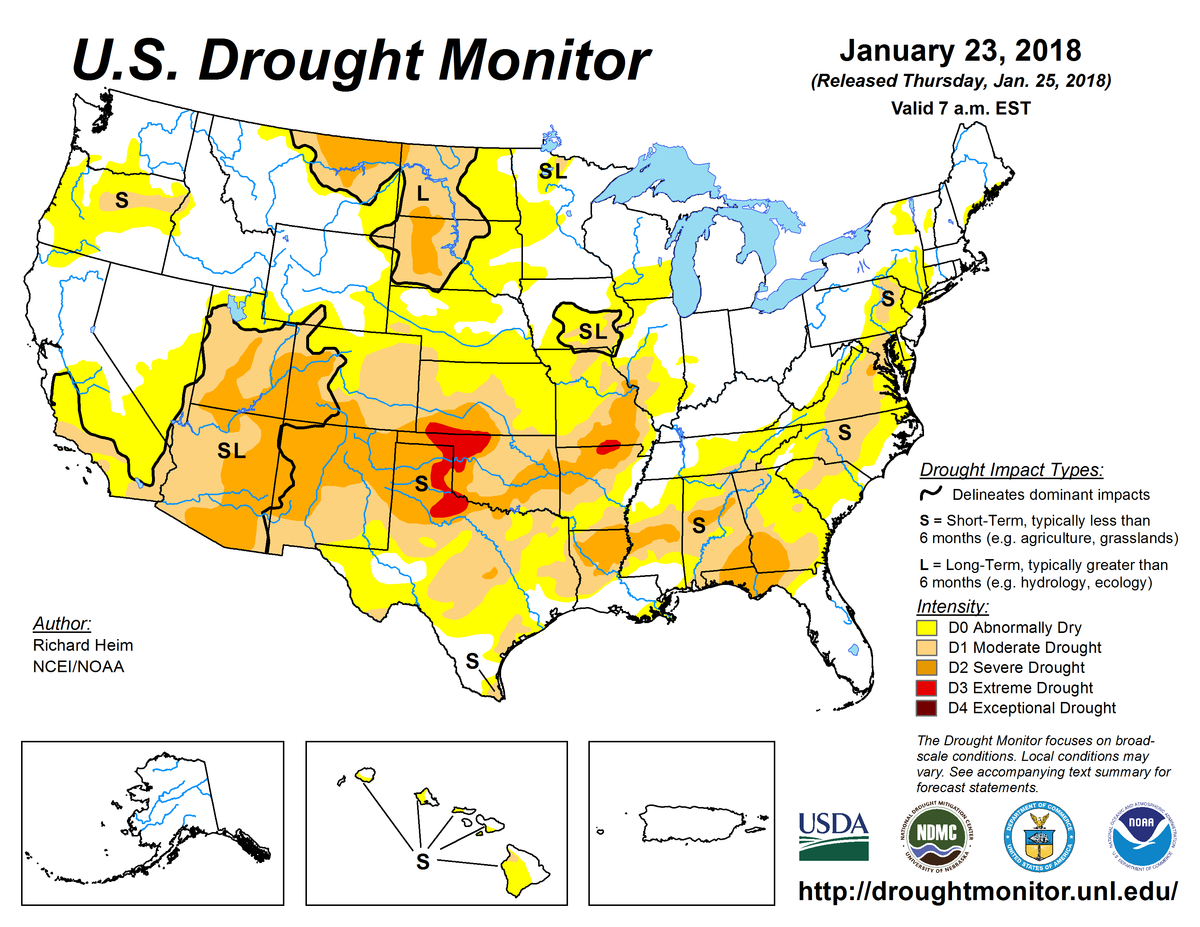
According to the January 23, 2018, U.S. Drought Monitor, moderate to extreme drought covers 35.4% of the contiguous United States, an increase from last week’s 33.0%. Extreme drought increased from 0.6% last week to 0.9%. The worst drought category, exceptional drought, remained absent from the Nation for a 15th consecutive week.
Pacific weather systems moved across the contiguous United States in a generally westerly flow this U.S. Drought Monitor week. Precipitation fell from the northern half of California to the northern and central Rockies, with a winter storm from Nebraska to the Great Lakes, and with cold fronts from eastern Texas to the East Coast. Precipitation amounts were high enough to qualify as wetter than normal across parts of the West, from the central Plains to Great Lakes, and along a strip from eastern Oklahoma to the mid-Mississippi Valley. But in the other precipitation areas, amounts were drier than normal.
Little to no precipitation fell across the northern Plains to upper Midwest and across most of the Southwest to southern Plains. The westerly flow brought above-normal temperatures to much of the West and along the northern-tier states, but below-normal temperatures lingered with previous cold air masses along the southern Plains to Southeast. As a result, minor contraction of drought and abnormal dryness occurred, mainly in the central Plains, but expansion and intensification of drought was the rule across the southern-tier states and a few areas to the north.
Abnormal dryness and drought are currently affecting over 167 million people across the United States—about 53.9% of the country’s population.

The full U.S. Drought Monitor weekly update is available from Drought.gov.
In addition to Drought.gov, you can find further information on the current drought as well as on this week’s Drought Monitor update at the National Drought Mitigation Center.
The most recent U.S. Drought Outlook is available from NOAA’s Climate Prediction Center and the U.S. Department of Agriculture provides information about the drought’s influence on crops and livestock.
For additional drought information, follow #DroughtMonitor on Facebook and Twitter.



